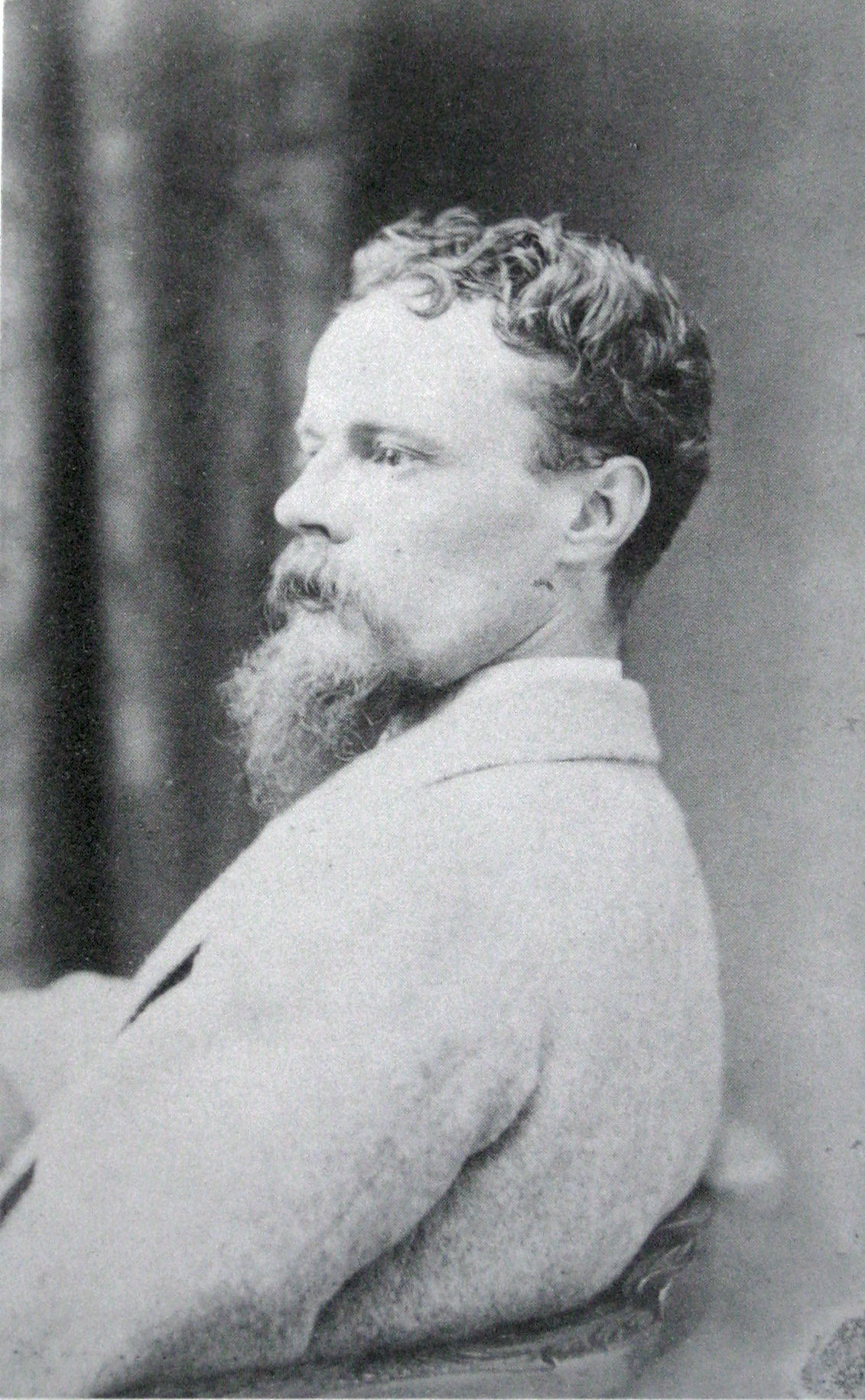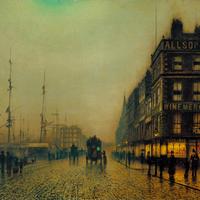More about John Atkinson Grimshaw
Works by John Atkinson Grimshaw

Contributor
John Atkinson Grimshaw was born September 6th, 1836 in Leeds, United Kingdom, and lived until October 31st, 1893.
As of today, this article is the most thorough Grimshaw resource available for free on the web, aside from the paintings themselves. Like Nereo Costantini and other artists of humble origin, Grimshaw's work has gained an enduring fame that the artist never sought, and nearly all literature on the artist is connected with exhibitions and only preserved in a couple of archives and books. Therefore, the knowledge about Grimshaw is largely a "theory of influence" giving details on other artists, similar to the method astronomers use to locate black holes: differential inference.
Grimshaw never wanted celebrity and spoke with his work itself, eventually becoming one of British society's most respected masters. With such honor came gallery representation and considerable wealth. It is, of course, possible for someone to paint landscapes of his category of brilliance today, but without becoming a celebrity? Unlikely. It is the contemplative, reflective, and introspective qualities of Grimshaw's landscapes, like those of Canaletto, which evoke a person looking toward a time both before and after the artist's lifetime, sanctifying a particular waterway with a personal perspective, an aesthetic opinion or sensibility. Whereas Canaletto's made sunny images of Venice, Grimshaw's beginning in the relative darkness of Leeds gives the character of night to his paintings.
Grimshaw's father was a policeman in Leeds who moved the family to Norwich in the 1840s looking for a better professional opportunity. Inspired to paint by John William Inchbold, also of Leeds, a "pre-Raphaelite landscape painter," Grimshaw quit his job as a railway clerk to enter painting full-time in 1861. Initially, Grimshaw made use of the methods of William Henry Hunt and Audubon in reproducing botanical and ornithological studies, before moving on to his famous landscapes. He became famous as a painter of moonlight. His first moonlit work is from 1867 and is titledWhitby Harbor by Moonlight, now held in a private collection. Other works include Mossy Glen, Nab Scar (1864), Autumn Glory: The Old Mill (1869), and Liverpool Quay by Moonlight (1887).
Sources
- Bromfield, D. Atkinson Grimshaw. Leeds: C.A.G., 1979.
- Phillips, Guy Ragland. John Atkinson Grimshaw, 1836–1893. Leeds: Lautrec, 1972.
- Robertson, Alexander. Atkinson Grimshaw. London: Phaidon, 1996.
Featured Content
Here is what Wikipedia says about John Atkinson Grimshaw
John Atkinson Grimshaw (6 September 1836 – 13 October 1893) was an English Victorian-era artist best known for his nocturnal scenes of urban landscapes. He was called a "remarkable and imaginative painter" by the critic and historian Christopher Wood in Victorian Painting (1999).
Grimshaw's love for realism stemmed from a passion for photography, which would eventually lend itself to the creative process. Though entirely self-taught, he is known to have openly used a camera obscura or lenses to project scenes onto canvas, which made up for his shortcomings as a draughtsman and his imperfect knowledge of perspective. This technique, which Caravaggio and Vermeer were suspected to have also used in secret, was condemned by a number of his contemporaries who believed it demonstrated less skill than painting by eye, with some claiming that his paintings appeared to "show no marks of handling or brushwork", while others "were doubtful whether they could be accepted as paintings at all". However, many recognised his mastery of colour, lighting and shadow, as well as his unique ability to provoke strong emotional responses in the viewer. James McNeill Whistler, whom Grimshaw worked with in his Chelsea studios, stated, "I considered myself the inventor of nocturnes until I saw Grimmy's moonlit pictures."
His early paintings were signed "JAG", "J. A. Grimshaw", or "John Atkinson Grimshaw", though he finally settled on "Atkinson Grimshaw".
Check out the full Wikipedia article about John Atkinson Grimshaw











